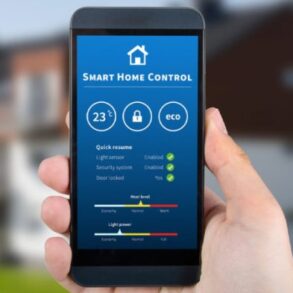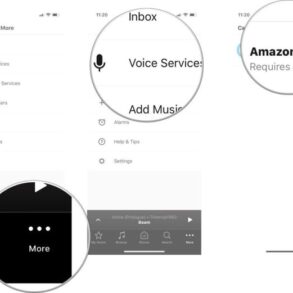Amazon smart thermostat vs nest thermostat pick the right hvac upgrade – Amazon Smart Thermostat vs Nest Thermostat: Pick the right HVAC upgrade. Choosing the perfect smart thermostat for your home can be a daunting task. Both Amazon and Nest offer compelling options, each boasting unique features and benefits. This comprehensive guide delves into the specifics of each device, highlighting their strengths and weaknesses, ultimately empowering you to make an informed decision that aligns with your needs and budget.
We’ll explore everything from their energy-saving capabilities to their ease of use, helping you understand which thermostat will best enhance your home’s comfort and efficiency.
This comparison will cover the key features, installation process, and potential long-term savings of both smart thermostats. We’ll also discuss factors to consider when selecting a smart thermostat, such as energy efficiency, compatibility with other smart home devices, and ease of use.
Introduction to Smart Thermostats
Smart thermostats are transforming how we manage our home’s temperature. They represent a significant leap forward from traditional thermostats, offering enhanced convenience, energy efficiency, and personalized comfort. Gone are the days of manually adjusting the thermostat or worrying about forgetting to turn it down when leaving home. Smart thermostats use advanced technology to learn your preferences and optimize your heating and cooling systems for optimal comfort and energy savings.These devices utilize a combination of sensors, algorithms, and connectivity to provide a sophisticated approach to temperature control.
Their basic functionalities encompass scheduling, remote access, and advanced learning algorithms, all contributing to a more streamlined and efficient home environment. This overview will delve into the core functionalities of smart thermostats, explore the different types available, and provide a comparative analysis of popular brands.
Basic Functionalities of Smart Thermostats
Smart thermostats offer several key advantages over traditional models. These advantages stem from their ability to automate and optimize temperature control. Central to their operation is the concept of scheduling, enabling users to pre-program temperature settings for different times of the day or week. This ensures optimal comfort without manual intervention, especially useful for when you’re away from home or sleeping.
Remote access, a defining feature, allows for adjustments to be made from anywhere with an internet connection. This is particularly helpful for adjusting the temperature before arriving home or for managing energy usage when away on vacation. Furthermore, sophisticated learning algorithms enable smart thermostats to analyze your habits and preferences, automatically adjusting settings to optimize comfort and energy efficiency.
These systems can recognize patterns in your usage and adapt to them, minimizing energy waste and maximizing your comfort.
Types of Smart Thermostats
Smart thermostats come in various forms, each tailored to different needs and preferences. One type focuses on simple scheduling and remote control, while others incorporate more advanced features, such as geofencing and integration with other smart home devices. The level of integration with home automation systems varies greatly, ranging from basic compatibility to sophisticated connectivity. The variety allows for personalized choices based on the user’s needs.
Comparison of Smart Thermostat Brands
| Feature | Brand A | Brand B | Brand C |
|---|---|---|---|
| Scheduling | Supports daily, weekly, and monthly schedules; customizable temperature profiles. | Advanced scheduling with options for holidays and special events; allows for multiple user profiles. | Limited scheduling options, primarily daily and weekly; lacks advanced profile customization. |
| Remote Access | Accessible via mobile app; supports voice control. | Comprehensive remote access with detailed temperature visualization and advanced control options. | Basic remote access through mobile app; limited voice control options. |
| Learning Algorithms | Adapts to your routines; learns your preferred temperature settings over time. | Highly advanced learning algorithms; anticipates your needs and adjusts temperature proactively. | Basic learning capabilities; doesn’t proactively anticipate changes in temperature needs. |
| Integration with other Smart Home Devices | Supports integration with select smart home platforms. | Full integration with major smart home ecosystems. | Limited integration; primarily compatible with basic smart home platforms. |
This table provides a concise comparison of key features across different smart thermostat brands. The specific features and functionalities can vary, so it’s crucial to consider your individual needs and preferences when making a purchase decision.
Amazon Smart Thermostat Features: Amazon Smart Thermostat Vs Nest Thermostat Pick The Right Hvac Upgrade
The Amazon smart thermostat, a popular choice for homeowners looking to upgrade their HVAC systems, offers a range of features designed to enhance comfort and energy efficiency. This detailed look at its functionalities will help you understand how it compares to other smart thermostats on the market.The Amazon smart thermostat, like other smart home devices, leverages the power of intuitive interfaces and connectivity to simplify home temperature control.
Its user-friendly interface and robust app integration enable seamless control and monitoring of your home’s temperature, regardless of your location. Its intelligent learning capabilities also adapt to your routines and preferences, further optimizing energy use.
App Integration and Compatibility
The Amazon smart thermostat seamlessly integrates with the Amazon Alexa ecosystem. This means you can control the thermostat using voice commands, making it a convenient part of your smart home setup. It also connects to other smart home devices through various protocols, offering flexibility and expandability.
- The thermostat is compatible with a wide range of Amazon devices, facilitating easy integration within existing smart home ecosystems.
- Its app provides a comprehensive interface for setting schedules, adjusting temperatures, and monitoring energy usage.
- Users can manage multiple thermostats from a single app interface, which is especially useful for larger homes or properties.
Scheduling Capabilities
The Amazon smart thermostat offers advanced scheduling features, allowing users to pre-set temperatures for specific times of the day or week. This capability is especially beneficial for managing energy consumption and optimizing comfort. The scheduling functionality also includes the ability to create custom schedules, catering to individual needs and preferences.
- Users can create daily, weekly, or even monthly schedules for optimal comfort and energy savings.
- Examples include setting the temperature to be cooler during the day while you’re at work and warmer when you’re at home.
- The thermostat can learn your schedule over time, adapting its pre-set schedules to your daily routine.
Learning User Preferences
The thermostat’s intelligent learning algorithms analyze user behavior to anticipate and adjust temperature settings accordingly. This personalized approach contributes to enhanced comfort and reduced energy waste. The system progressively learns user preferences over time, ensuring optimal performance.
- The thermostat learns your preferred temperatures at different times of the day and in different seasons.
- The thermostat can also adapt to your schedule, recognizing when you are away from home and adjusting the temperature accordingly.
- This learning feature helps to reduce energy consumption by only adjusting the temperature when necessary.
Integration with Other Smart Home Devices
The Amazon smart thermostat integrates seamlessly with other smart home devices through the Amazon ecosystem. This interoperability allows for a comprehensive smart home experience. This feature enables users to control multiple smart home devices with a single interface or through voice commands.
- Users can link the thermostat with smart lights, security systems, and other appliances to create automated responses based on temperature changes.
- For example, the lights could automatically dim when the temperature drops below a certain threshold.
- This interoperability expands the functionalities of the thermostat beyond basic temperature control, creating a more integrated and automated smart home system.
Comparison Table
| Feature | Amazon Smart Thermostat | Nest Thermostat | Other Competitor (e.g., Ecobee) |
|---|---|---|---|
| App Integration | Excellent integration with Amazon ecosystem | Excellent integration with Google ecosystem | Good integration with various ecosystems |
| Scheduling | Comprehensive scheduling options | Comprehensive scheduling options | Robust scheduling options |
| Learning Capabilities | Adapts to user preferences | Adapts to user preferences | Adapts to user preferences |
| Voice Control | Excellent voice control via Alexa | Good voice control via Google Assistant | Good voice control via various platforms |
| Price | Competitive pricing | Competitive pricing | Competitive pricing |
Nest Thermostat Features
The Nest Learning Thermostat, a pioneer in smart thermostats, offers a unique approach to home climate control. Its intuitive design and sophisticated algorithms make it a popular choice for homeowners seeking energy efficiency and comfort. Beyond basic temperature adjustments, the Nest offers a comprehensive suite of features that enhance the user experience.Nest’s intelligent learning algorithms analyze user behavior and environmental factors to optimize heating and cooling schedules.
This dynamic adaptation leads to significant energy savings without compromising comfort. The result is a thermostat that learns and adapts to your preferences, making your home’s temperature just right.
Learning Algorithms and Adaptation
Nest’s learning algorithms are a core strength of the product. They analyze your daily routines, such as when you leave and return home, and adjust the temperature accordingly. The system learns your preferences over time, adapting to your specific needs and creating a personalized temperature profile. This continuous learning process leads to optimized energy use and consistent comfort.
For example, if you typically leave for work at 8 AM and return at 5 PM, the Nest will automatically adjust the temperature to a preset value before you leave and return, optimizing energy usage without sacrificing your comfort.
Key Functionalities
Nest’s functionalities extend beyond simple temperature control. Remote access and app integration allow users to manage their thermostat from anywhere. This feature is particularly useful for adjusting the temperature before arriving home or when traveling. This flexibility and convenience are essential for modern lifestyles.
- Remote Access: The Nest app enables control of the thermostat from anywhere with an internet connection. This feature is vital for those who need to adjust the temperature while away from home. For example, if you are traveling for a weekend, you can easily adjust the temperature to avoid unnecessary energy waste.
- App Integration: Nest integrates seamlessly with other smart home systems, allowing for a unified control center for your entire home. This integration offers greater automation and control, enhancing the smart home experience.
Compatibility with Smart Home Systems, Amazon smart thermostat vs nest thermostat pick the right hvac upgrade
Nest’s compatibility with other smart home systems is a significant advantage. Integration with platforms like Apple HomeKit and Google Home allows users to seamlessly integrate the Nest thermostat into their existing smart home ecosystem. This seamless integration provides a unified control system for all smart devices in your home, improving convenience and user experience. For example, you can program your lights to turn on as the thermostat detects you’re approaching your home, enhancing your comfort and security.
Comparison Table
| Feature | Nest | Amazon | Other Brand (e.g., Ecobee) |
|---|---|---|---|
| Learning Algorithm | Advanced, personalized learning | Basic learning, limited customization | Advanced learning, personalized schedules |
| App Integration | Excellent integration with various platforms | Good integration with Amazon ecosystem | Good integration with various platforms |
| Remote Access | Excellent remote control | Good remote control | Excellent remote control |
| Design | Sleek, modern design | Simple, functional design | Modern, stylish design |
Comparison of Amazon and Nest Thermostats
Choosing between the Amazon Smart Thermostat and the Nest Thermostat involves evaluating factors like energy efficiency, setup complexity, user experience, and cost. Both are popular smart thermostats, but they cater to different user preferences and needs. Understanding the nuances of each model is crucial for making an informed decision.
Energy Efficiency Comparison
Both thermostats are designed to optimize energy consumption, but their performance varies. Studies have shown that smart thermostats, in general, can reduce energy bills by 10-15% compared to traditional models. This is largely due to their ability to learn user habits and adjust temperatures accordingly. While both Amazon and Nest models aim for this, specific data comparing their energy-saving capabilities is not always directly available from manufacturers.
Choosing between an Amazon smart thermostat and a Nest thermostat for your HVAC upgrade can be tricky. While both offer smart features, factors like ease of use and specific needs play a role. Checking out some exciting new trailers for movies like Knives Out, Jumanji: Next Level, and Wu-Tang: An American Saga might help you decide! new trailers knives out jumanji next level wu tang more Ultimately, the best thermostat depends on your home’s setup and your budget.
Ultimately, consider your home’s setup and budget to find the perfect smart thermostat.
However, reports suggest Nest’s learning algorithms, which adapt to daily routines, may lead to marginally better energy savings in some cases. This difference often depends on individual user habits and home characteristics.
Installation and Setup Processes
The installation process is generally straightforward for both thermostats, involving connecting the thermostat to the existing HVAC system and the Wi-Fi network. However, subtle differences exist. The Amazon Smart Thermostat may require more manual configuration steps, particularly if dealing with a complex HVAC system. Conversely, the Nest Thermostat often boasts a more intuitive and automated setup process, reducing the chances of errors.
The Amazon Smart Thermostat might require more direct interaction with the user for setup, while Nest often takes care of many steps automatically. Overall, both are easy to install, but the Nest setup process often requires less hands-on time.
User Experience and Interface Design
The user experience differs based on personal preference. The Amazon Smart Thermostat typically offers a more straightforward and minimalist interface, which some users find easier to navigate. The Nest Thermostat, on the other hand, often receives praise for its visually appealing design and intuitive interface, which some find more engaging. Both thermostats provide user-friendly mobile apps for remote control and management.
Choosing between an Amazon smart thermostat and a Nest thermostat for your HVAC upgrade can be tricky. Both offer impressive features, but ultimately, the best choice depends on your individual needs and budget. For enhanced privacy, you might want to consider setting up ad blocking and exploring options like do not track duckduckgo ad tracking to minimize data collection.
Ultimately, the smart thermostat you pick should enhance your comfort and energy efficiency, without compromising your personal data privacy. So, take your time, research, and select the best fit for your home and lifestyle.
Amazon’s interface often leans toward simplicity, while Nest’s may be considered more visually sophisticated. Ultimately, the best interface depends on individual preferences.
Cost-Effectiveness Analysis
Initial purchase price is a key factor. The Amazon Smart Thermostat might be more budget-friendly, while the Nest Thermostat often comes with a higher price tag. However, long-term savings through energy efficiency need to be considered. While both models aim for cost reduction, the extent of savings will vary based on individual usage patterns and home characteristics.
The long-term cost-effectiveness is heavily influenced by the energy savings each model provides over time.
Direct Comparison Table
| Feature | Amazon Smart Thermostat | Nest Thermostat |
|---|---|---|
| Price | Generally lower | Generally higher |
| Features | Basic smart features; often customizable options | Advanced smart features; often more intuitive interface |
| Energy Efficiency | Proven energy-saving capabilities | Potentially slightly better energy savings |
| Installation | May require more manual configuration | Often more automated and user-friendly setup |
| User Experience | Simple and straightforward interface | Visually appealing and intuitive interface |
Factors to Consider When Choosing a Thermostat
Choosing the right smart thermostat is crucial for optimizing your home’s comfort and energy efficiency. It’s more than just a temperature control; it’s an investment in your home’s sustainability and your wallet. Understanding the factors involved in selecting a smart thermostat will help you make an informed decision.Smart thermostats offer advanced features that traditional thermostats simply can’t match, but careful consideration of your needs and circumstances is vital.
This involves examining energy efficiency, compatibility with your existing smart home ecosystem, ease of installation, and how your specific home setup influences the best thermostat choice.
Choosing between an Amazon smart thermostat and a Nest thermostat for your HVAC upgrade can be tricky. Ultimately, the best choice depends on your specific needs and budget. However, understanding consumer rights, like those outlined in Colorado’s right to repair law for electronics devices and parts pairing, here , is crucial when making a decision. After all, you want a system that’s both easy to use and maintain in the long run.
This knowledge will also help you evaluate the long-term cost-effectiveness of each option.
Energy Efficiency
Energy efficiency is paramount when choosing a smart thermostat. A thermostat that effectively manages your heating and cooling system can translate into substantial energy savings over time. Smart thermostats, with their advanced algorithms and learning capabilities, can optimize temperature settings to match your usage patterns and the outside environment, minimizing energy waste. Modern thermostats often feature advanced scheduling, learning features, and geofencing capabilities to further reduce energy consumption.
For example, a smart thermostat can learn your daily routines and adjust temperatures accordingly, turning down the heat when you’re away or when you’re asleep.
Compatibility with Other Smart Home Devices
Compatibility with your existing smart home ecosystem is essential for seamless integration. A thermostat that integrates well with your smart home hub (like Amazon Alexa or Google Assistant) allows for centralized control and automation. This means you can adjust the temperature with voice commands, or have it automatically respond to changes in weather conditions or your location. This interoperability enhances the overall smart home experience.
If you’re already invested in a particular smart home ecosystem, choosing a thermostat that aligns with it will create a cohesive and user-friendly smart home system.
User-Friendliness and Ease of Installation
A user-friendly interface and straightforward installation process are key. The thermostat’s display and control options should be intuitive and easy to navigate. A complicated interface can lead to frustration and discourage optimal use. Installation should be relatively straightforward, even for less technically inclined individuals. A clear setup guide and user-friendly app support will ease the transition to your new smart thermostat.
For instance, a simple, clear interface with well-labeled buttons and intuitive controls contributes to a positive user experience.
Installation Scenarios and Thermostat Choice
Different installation scenarios may affect the choice of thermostat. For instance, a homeowner in a single-story home with a simple HVAC system might find a basic smart thermostat sufficient. In contrast, a homeowner with a complex, multi-zone system or a home with multiple floors may need a more sophisticated smart thermostat that supports advanced zoning or multi-room control.
Homes with existing smart home systems will benefit from a thermostat that integrates well with those systems. A well-designed thermostat should cater to various needs and installations.
Considerations for Choosing the Right Smart Thermostat
- Energy efficiency ratings: Look for thermostats with high energy efficiency ratings, which can save you money on your energy bills over time.
- Smart home ecosystem compatibility: Ensure the thermostat is compatible with your existing smart home ecosystem for seamless integration.
- User interface and app features: A user-friendly interface and intuitive app will enhance your user experience.
- Installation complexity: Consider the complexity of your HVAC system and choose a thermostat that aligns with its capabilities.
- Budget: Smart thermostats come in various price ranges. Establish a budget to narrow down your choices.
- Read reviews and compare models: Thoroughly research and compare models to identify the best fit for your specific needs and preferences.
Smart Thermostat Installation and Setup
Choosing the right smart thermostat involves more than just features; a smooth installation and setup are crucial for a seamless experience. A well-integrated thermostat ensures optimal energy efficiency and comfort. This section details the step-by-step processes for installing both Amazon and Nest smart thermostats, along with the app setup.
Amazon Smart Thermostat Installation
Understanding the installation process is essential for successful operation. The Amazon smart thermostat installation is generally straightforward, requiring minimal technical expertise.
- Unboxing and Preparation: Carefully unpack the thermostat, ensuring all components are present (e.g., mounting hardware, batteries). Confirm that your existing HVAC system is compatible with the Amazon thermostat.
- Wiring and Mounting: Carefully disconnect the power to your existing thermostat. Refer to the included manual for precise wiring instructions. Securely mount the new thermostat on the wall using the provided hardware.
- App Connection and Configuration: Download the Amazon Smart Home app. Follow the app’s instructions to connect the thermostat to your Wi-Fi network. Configure the thermostat’s settings, including preferred temperature, schedules, and any additional features.
- Testing and Verification: Once connected, test the thermostat’s functionality by adjusting the temperature and verifying that the system responds accordingly. Ensure the display and controls operate correctly.
Example: If you have a specific HVAC system, such as a heat pump, refer to the Amazon thermostat manual for specific wiring instructions to ensure compatibility.
Nest Smart Thermostat Installation
Nest thermostats are known for their intuitive design and user-friendly setup. This process ensures the thermostat is correctly integrated with your home’s HVAC system.
- Preparation: Gather all necessary materials, including the Nest thermostat, mounting hardware, and a compatible HVAC system.
- Wiring and Mounting: Carefully disconnect the power to your existing thermostat. Refer to the included Nest installation guide for precise wiring and mounting instructions. These steps often involve replacing the existing thermostat with the Nest model. Double-check the wiring connections.
- App Connection and Setup: Download the Nest app. Follow the on-screen instructions to connect the Nest thermostat to your Wi-Fi network. The app guides you through setting up schedules, preferences, and advanced features.
- Testing and Verification: After setup, test the thermostat’s functions, including adjusting the temperature and verifying that the system responds as expected. Review the Nest app for confirmation of successful connection and configuration.
Example: When mounting the Nest thermostat, use the provided templates to ensure proper alignment with your existing wiring.
Visual Guide (Installation)
Amazon Thermostat Installation
Step 1: Unpack and gather materials.
Step 2: Disconnect power and carefully wire the thermostat to the existing HVAC system.
Step 3: Securely mount the thermostat on the wall.
Step 4: Connect to the Amazon app and set up.Nest Thermostat Installation
Step 1: Gather all materials and check the HVAC system compatibility.
Step 2: Disconnect power and wire the Nest thermostat to the existing system.
Step 3: Mount the Nest thermostat on the wall.
Step 4: Connect to the Nest app and complete setup.
Long-Term Cost Savings and Maintenance

Choosing between smart thermostats often hinges on long-term cost-effectiveness. Beyond the initial purchase price, factors like energy savings and maintenance play a crucial role in determining the true value of an investment. This section delves into the potential long-term savings and the upkeep required for both Amazon and Nest thermostats.Smart thermostats, with their ability to learn user preferences and automatically adjust settings, offer significant potential for energy savings, leading to reduced utility bills over time.
This translates to tangible financial benefits, making the initial investment more attractive in the long run. However, maintenance considerations are also important.
Potential Long-Term Cost Savings
Smart thermostats can lead to substantial energy savings through optimized heating and cooling schedules. A well-calibrated smart thermostat, adjusting to occupancy patterns and external conditions, can significantly reduce energy consumption. For instance, a family that consistently forgets to turn off the heating when leaving for work could see a notable reduction in energy bills with a smart thermostat automatically adjusting the temperature during their absence.
This reduction in energy use translates directly into lower utility bills and, consequently, long-term cost savings.
Maintenance Requirements for Amazon and Nest Thermostats
Both Amazon and Nest thermostats generally require minimal maintenance. Regular cleaning, typically dusting or wiping the exterior, is sufficient for maintaining optimal performance. No complex procedures or specialized tools are usually needed. For both brands, infrequent software updates ensure continued functionality and compatibility with evolving smart home systems. However, the specific maintenance requirements and the frequency of updates might vary slightly between models.
Comparison of Estimated Long-Term Costs
Predicting the exact long-term costs is challenging, as it depends on individual energy consumption patterns, local utility rates, and the specific thermostat model. Nevertheless, smart thermostats generally demonstrate a positive return on investment due to their energy-saving capabilities.
Breakdown of Maintenance Costs
The maintenance costs for both Amazon and Nest thermostats are minimal. Typically, the cost associated with owning a smart thermostat is limited to occasional cleaning and software updates. No specialized parts or extensive repairs are expected during the typical lifespan of these devices.
Table of Potential Long-Term Costs
| Feature | Amazon Smart Thermostat | Nest Thermostat |
|---|---|---|
| Initial Purchase Price | (Variable) | (Variable) |
| Estimated Energy Savings (Annual) | (Variable) | (Variable) |
| Estimated Maintenance Costs (Annual) | Minimal (e.g., occasional cleaning) | Minimal (e.g., occasional cleaning) |
| Potential Long-Term Cost Savings | Significant, depending on energy usage and rates | Significant, depending on energy usage and rates |
Summary

Ultimately, the best smart thermostat for you hinges on your individual preferences, budget, and smart home ecosystem. By weighing the pros and cons of each device, you can confidently choose the thermostat that best fits your home and lifestyle. Consider your current setup, your desired level of control, and your budget when making your final decision. This guide has provided a comprehensive overview to help you choose the perfect upgrade for your home’s heating and cooling system.












